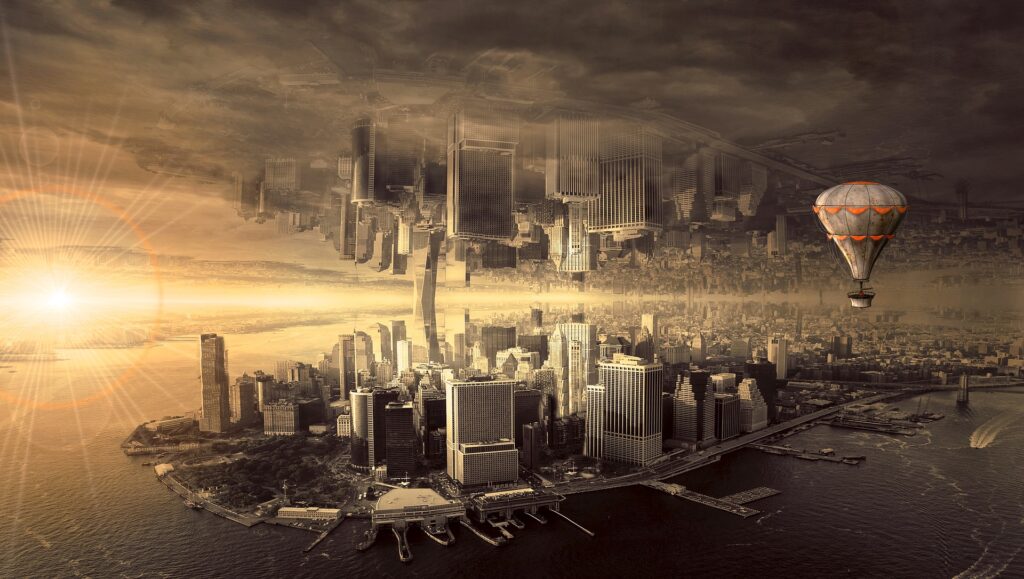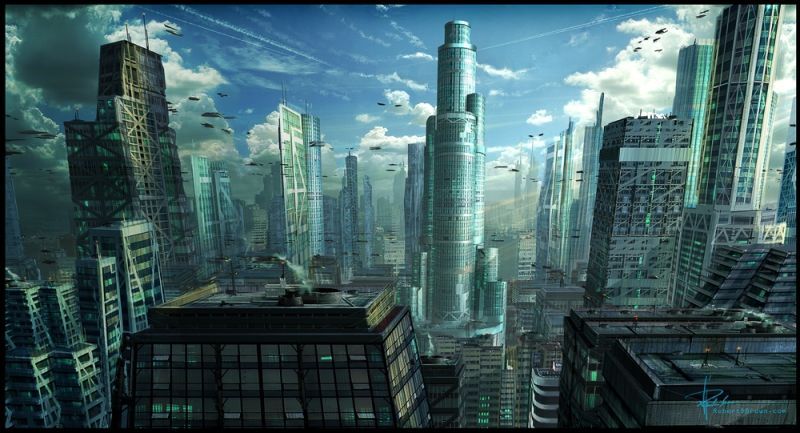In the coming decades, the planet’s most heavily concentrated populations may occupy city environments where a digital blanket of sensors, devices, and cloud connected data are orchestrated to enhance humanity’s living experience. A variety of smart concepts are forming key elements of what enable city ecosystems to function effectively – from traffic control and environmental protection to the management of energy, sanitation, healthcare, security, and buildings. In this article, we reflect on the potential personal impacts of the smart city, and its technologies, on the individuals residing there.
Eyes on the Prize
In the race to attract ideas, business, talent and money, the world’s premier cities are competing to build highly interconnected smart environments where people, government, and business operate in symbiosis with spectacular, exponentially improving technologies. These include big data, the Internet of Things (IoT), cloud computing, hyperconnectivity, artificial intelligence (AI), robots, drones, autonomous green vehicles, 3D/4D printing, and renewable energy. The trick will be to ensure that this array of technological goodies is harnessed in service of the humans that make cities what they are.
Purpose, Engagement, and Vision
Despite the inevitable focus on technology, experience to date suggests that the most effective smart city programs are driven by a clear understanding of the forces shaping the future that will impact city life and a compelling vision of what type of city we aim to deliver. They also have a high level of citizen engagement around the core requirements the city must serve and the behavioural changes required from the population to ensure the vision is brought to life.
With an emphasis on civic engagement, education will be a key priority. It will be important to ensure that information overload doesn’t wreak havoc, as information will be abundant in future smart cities. To balance the flow of data, it will be essential that lifelong learning, critical thinking, and mindfulness techniques are taught from a young age. Since the notion of “sustainable life” in a smart city would by definition need to be purposeful and abundant, the people living within one may find it valuable to focus on some vision of the future that they wish for, and plan how to create it with the resources and privileges they are afforded – the smart city will be a place where all “needs” and most “wants” are easily met.
Observation and Surveillance
The blanketing of cities with sensors and cameras can provide the underlying data to enable continuous monitoring of everything from traffic, pollution, people movement, and security risks. The downside here is the potential for continual and deep surveillance which may butt up against concerns over personal privacy. On the other hand, as the young digital natives who were born immersed in technology, perhaps societal norms on personal privacy will shift. Continuous monitoring may simply fade into the background of everyday life. The advantages of monitoring – no crime, better traffic flows, and fewer unpredicted life events – might overshadow the negatives. Predictability might be boring, but good – for most of us. Smart cities offer an image of the future where we make trade-offs: So while our comings and goings each day would be monitored continually, the by-product is that crimes like mugging could become almost non-existent.
Always Connected
The ultimate vision of a fully connected and always on city implies every activity configured for and in service of the individual. Imagine an individual being monitored by a collection of body sensors. These feed the individual’s mobile phone, which detects a pattern that suggests that person may be building up to a cardiac arrest. The phone might notify the relevant GP and call an ambulance. A driverless medical vehicle then arrives with a robot capable of carrying the patient to the vehicle and undertaking a range of medical tasks under guidance from a doctor observing remotely via video. On the journey to the hospital, the patient’s phone notifies the relevant next of kin, reschedules meetings and controls all of the pre-programmed domestic heating and cooking activities that had been scheduled to take place.
Mobility
The Holy Grail of the smart city is a fully interconnected, multi-modal transport system, where a combination of rail, metro services, buses, taxis, personal vehicles, rickshaws, and bicycles can be used to interconnect journeys. The driver is to save time, money, reduce environmental impacts, and allow passengers to purchase and complete end-to-end journeys seamlessly. As an added bonus, the entire transportation system would ideally run on a backbone of clean, renewable, and electric power.
Ecological Impact
In the idealised vision, the smart city dweller of the future would leave behind a small ecological footprint compared to their early 21st century counterparts. By 2030 and beyond, living in a city might be the lifestyle in which society falls into symbiosis with nature. It would be ironic to find that countercultural rebels who’ve moved out of cities and “off-grid” form a greater burden to society than a taxi-hailing urbanite. Built-in ecological efficiencies in smart cities could range from use of vertical farms to lock cities in to strictly local food production, or the use of zero-waste regimes and local circular economies, where the life cycle of things becomes stretched longer through reuse, recycling and repurposing. Eventually, cities could become self-sustaining, giving back more than they take from the ecosystem.
Cities of the Future
Cities are powerful symbols of modernity. People are drawn to cities for numerous reasons but sometimes it is simply to try their luck at making money, meeting a spouse, or learning something new. Smart cities in the future might make luck obsolete through exquisite planning and monitoring systems which predict every detail of what happens day to day. Some fear that such extreme social planning would make serendipity extinct. Nothing would happen by chance in a smart city, or at least that is the idea: no burst pipes flooding apartment buildings, no debris blocking the trains, no traffic accidents or broken-down cars. On the other hand, it means no chance meetings, no getting lost in a strange neighbourhood, and no more anonymity. The vision of smart cities can be idyllic, but it also implies living under the shadow of Big Brother. Ultimately the future is what we create, so there is no absolute path determined. But our choices regarding technology today and tomorrow will play a major role in shaping which future emerges, which is something to think about for planners and city leaders as they map their future strategies and investment plans.
About the Authors
The authors are futurists with Fast Future who specialise in studying and advising on the impacts of emerging change. Fast Future also publishes books from future thinkers around the world exploring how developments such as AI, robotics and disruptive thinking could impact individuals, society and business and create new trillion-dollar sectors. Fast Future has a particular focus on ensuring these advances are harnessed to unleash individual potential and enable a very human future. See: www.fastfuture.com
Rohit Talwar is a global futurist, keynote speaker, author, and CEO of Fast Future where he helps clients develop and deliver transformative visions of the future. He is the editor and a contributing author for The Future of Business, editor of Technology vs. Humanity, and co-editor of a forthcoming book on Unleashing Human Potential–The Future of AI in Business.
Steve Wells is the COO of Fast Future and an experienced Strategist, Futures Analyst, and Partnership Working Practitioner. He is a co-editor of The Future of Business, Technology vs. Humanity, and a forthcoming book on Unleashing Human Potential–The Future of AI in Business.
April Koury is a foresight researcher, writer, and publishing director at Fast Future. She is a contributor to The Future of Business, and a co-editor of Technology vs. Humanity, and a forthcoming book on 50:50–Scenarios for the Next 50 Years.
Alexandra Whittington is a futurist, writer, faculty member on the Futures programme at the University of Houston, and foresight director at Fast Future. She is a contributor to The Future of Business and a co-editor for forthcoming books on Unleashing Human Potential–The Future of AI in Business and 50:50–Scenarios for the Next 50 Years.


